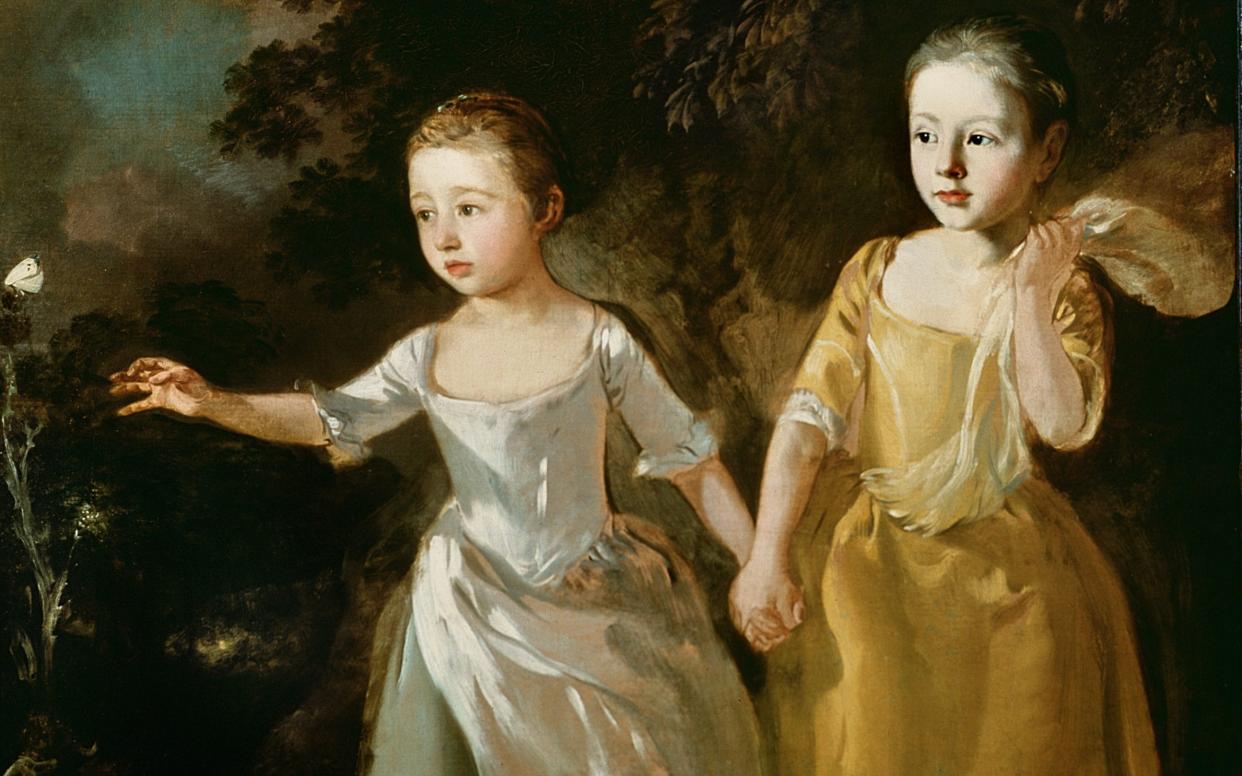Culture Fix: The Painter’s Daughters Chasing a Butterfly by Thomas Gainsborough

Painting children convincingly is a tricky challenge. Even our finest galleries are riddled with clumsy images of toddlers and tykes as stiff and lifeless as dolls. Which is why this fresh, heartfelt painting by Gainsborough is so brilliant. Let others gawp at The Morning Walk, his famous masterpiece in the National Gallery, with its promenading couple dressed to the nines in silks and ostrich feathers. I’d sooner settle for the more modest portrayal of his daughters, Mary and Margaret (c. 1756) , in an adjoining room.
Intimate and miraculously natural, it is one of the most original paintings in English art, as Hugh Belsey suggests in his catalogue raisonné of Gainsborough’s portraits, which, earlier this month, won the annual Berger Prize for British art history. Aged around four or five and six, Gainsborough’s girls – whom he fondly nicknamed “Molly” and “the Captain” (signalling, perhaps, that Margaret could be bossy) – hold hands one evening while passing through a shady landscape, in pursuit of a cabbage white that has alighted on a purple thistle. Chubby and impetuous, Margaret reaches out to grab the insect. Her older sister, meanwhile, appears cautious, concerned that her sibling is about to hurt her fingers on the plant’s prickles. At the same time, Mary bunches up her apron like a lepidopterist’s net, ready to assist.
Gainsborough painted this, the earliest of six double portraits in oils of his daughters, when he was almost 30, and the family was living in the market town of Ipswich. With its experimental handling and almost life-size figures, it was, simply, like nothing he had produced before. See how carefully he paints the girls’ individual faces, while deliberately leaving other parts of the canvas unfinished to convey spontaneity.
Moreover, the tone is complex, bittersweet. In the 18th century, the scene would have been understood as an allegory of the dangers of impulsiveness, and the pursuit of transitory worldly pleasures, symbolised by the butterfly. It’s a painting, too, about the ephemerality of childhood, and loss of innocence: only Margaret’s dress, we note, is white. A few years earlier, Gainsborough and his wife had suffered the death of a daughter during infancy. Molly and the Captain survived, but neither grew up to be happy. Above all, though, we sense the artist’s tenderness for his daughters in this moment, made all the sweeter by his awareness that this beguiling phase of their childhood must, butterfly-like, soon flutter away. That’s something every parent can understand.
